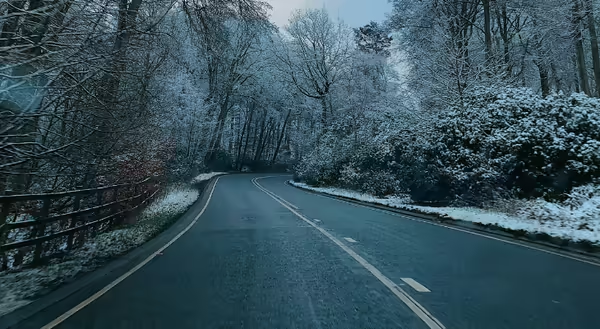
When the weather turns cold, windy, and snowy, many of us prefer to stay indoors and keep warm at home. However, for those who venture outside, clear and safe roads are essential for traveling any distance. Using road salt lowers the freezing point of water, which prevents ice from forming. Salting the roads helps protect drivers and pedestrians, but it is important to recognize how and when to use salt.
Road salt, or rock salt, is mostly comprised of sodium chloride (NaCl), but can also have calcium chloride (CaCl2) or magnesium chloride (MgCl2). Across the United States, it is estimated that more than 20 million metric tons of salt are used on roads each year.
When planning to use salt for your walking paths or driveways, take note of these tips:
Shovel any snow or ice that is on the surface. This will require less salt to be used and will work at a faster rate.
Use an adequate amount of salt. A 12-ounce coffee mug should be enough salt for a 20-foot driveway or 10 sidewalk squares. Evenly spread-out salt rather than having clumps or piles; there should be about 3 inches between each grain of salt. If you see salt on the pavement after a storm, you may have used too much. Sweep up excess salt and reuse it in the future.
The rock salt works to reduce ice formation unless temperatures are below 16 degrees Fahrenheit. If the temperature is below that threshold, switch to sand for traction or a different substance designed for colder temperatures.
Using good practices of salt management for pathways and roads during winter months is essential to protecting our waterways. When too much salt is added, salt travels through runoff and adds chloride to bodies of water. Once chloride is present, it is difficult to remove it. Heightened levels of chloride can be toxic to fish and invertebrate species, which corresponds with impacted water quality in our waterways.
Through The National Great Rivers Research and Education Center, community members are encouraged to take up community science opportunities and join the Winter Chloride Watchers. This project teaches and empowers individuals to collect chloride levels to increase local knowledge about chloride issues in rivers, lakes, streams, and ponds. The project also aims to identify places across the state where chloride concentrations are too high, assisting community members to make better decisions about the use of road salt.
When the next winter storm rolls in, remember to be mindful of how to utilize salt to its full potential while protecting our waterways from runoff.